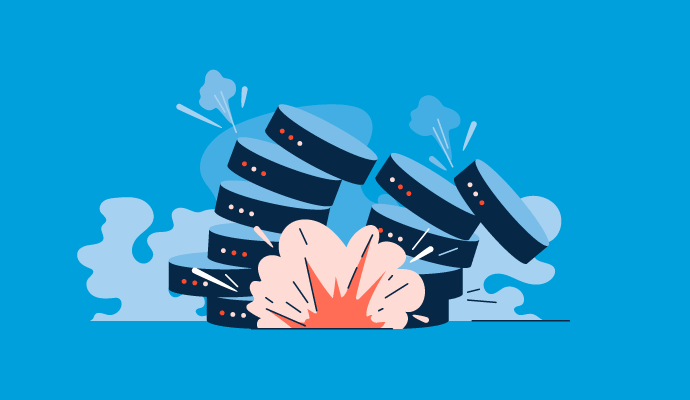How Robust Data Destruction Improves Your Overall Cyber Security Measures
How Robust Data Destruction Improves Your Overall Cyber Security Measures
Blog Article
The Value of Effective Data Damage Practices in Shielding Sensitive Info and Ensuring Computer System Security
In an era where information violations are significantly usual, the value of efficient data destruction techniques can not be overemphasized. Executing robust information destruction approaches not just alleviates these dangers however also aligns with lawful conformity requirements, making sure that companies promote their credibility and foster customer depend on.
Comprehending Information Damage
Comprehending information destruction is important in today's electronic landscape, where sensitive info can easily be endangered. Efficient data devastation includes not just erasing files yet making sure that information is irretrievable with thorough approaches. This process is important for companies that take care of private client information, copyright, or inner documents, as any violation can bring about severe financial and reputational repercussions.
Data destruction encompasses various strategies, including shredding physical media, degaussing magnetic storage tools, and employing software-based solutions that overwrite information numerous times. Each approach serves a particular objective and needs to line up with the sensitivity of the information being dealt with. Physical destruction is usually chosen for difficult drives having very personal information, while software program approaches might be sufficient for less delicate details.
Additionally, sticking to industry standards and policies, such as the General Data Protection Regulation (GDPR) or the Wellness Insurance Portability and Accountability Act (HIPAA), is necessary for conformity and to reduce legal risks. Organizations has to create a durable data destruction policy, train staff members on ideal methods, and on a regular basis investigate their procedures to ensure that all delicate details is disposed of firmly and successfully.
Dangers of Inadequate Practices
Inadequate information devastation methods expose companies to substantial dangers that can have significant consequences. When delicate details is not appropriately thrown away, it stays prone to unapproved access, which can bring about data breaches and identification theft. Such incidents not just endanger the safety and security of individuals however also stain the company's track record, leading to a loss of consumer depend on and potential economic effects.
Furthermore, governing compliance is increasingly rigid in numerous sectors. Failing to stick to information devastation guidelines can cause large fines and lawsuits against companies. These charges can stress monetary resources and divert attention from core organization operations.
In enhancement, the misuse of recurring data can cause copyright burglary or company espionage, jeopardizing competitive advantages (data destruction). The impact of insufficient information devastation extends beyond instant financial losses; it can additionally cause long-term damage to brand stability and market setting

Organizations have to identify that information protection is not exclusively concerning preventing violations; it additionally encompasses the accountable monitoring of information throughout its lifecycle. Overlooking efficient data damage procedures can have disastrous effects, emphasizing the requirement for durable actions to mitigate these risks.
Best Practices for Data Devastation
Applying reliable information devastation techniques is essential for securing delicate info and preserving compliance with regulatory standards. Organizations ought to embrace a multi-faceted technique to make certain that data is irretrievable, consequently stopping unauthorized access and potential violations.
First, information must be classified based upon sensitivity, allowing companies to use proper destruction approaches customized to the level of risk. For digital data, utilizing software-based data-wiping tools that follow her explanation industry criteria can properly overwrite existing data. Physical destruction methods, such as shredding or degaussing, are essential for gadgets that store delicate details, making certain full removal.
Establishing a clear information retention plan is crucial, describing just how long various sorts of information must be maintained before damage. Regular audits of information storage systems are likewise required to identify obsolete or unneeded data needing elimination.
Additionally, training employees on the value of information destruction and the certain protocols to comply with fosters a society of safety and security within the company. Lastly, preserving documentation of information devastation processes offers liability and supports compliance with external policies and inner plans. By sticking to these best methods, companies can substantially minimize the risks connected with information exposure.
Legal and Compliance Considerations
Failing to follow these laws can result in serious fines, including considerable penalties and reputational damage. Organizations needs to implement a robust information destruction policy that straightens with these lawful frameworks and gives clear guidelines on the appropriate techniques of information disposal, whether physical shredding or digital wiping.
In addition, maintaining documentation of information devastation activities is necessary for showing conformity during audits or examinations. By prioritizing legal and compliance factors to consider, companies can boost their data safety and security stance and foster trust fund with clients and stakeholders, eventually adding to a much more safe information monitoring environment.
Benefits of Effective Data Destruction
Reliable data destruction practices prolong beyond simple conformity; they supply significant advantages to organizations that prioritize them. By making certain that delicate details is irretrievably damaged, companies minimize the threat of information violations and the prospective monetary effects associated with them. This proactive method not only safeguards against unauthorized access but likewise enhances the overall dependability of the organization in the eyes of stakeholders and customers.
Implementing robust information devastation techniques, such as physical damage of storage gadgets or sophisticated information cleaning methods, adds to the strengthening of a company's cybersecurity posture. data destruction. It lowers the probability of copyright burglary and shields exclusive info, consequently preserving an one-upmanship in the marketplace

Verdict
In final thought, reliable information destruction methods are crucial for protecting delicate information and improving general computer system safety and security. By applying thorough methods such as degaussing, software program, and shredding overwriting, organizations can alleviate the threats associated with unauthorized access and data violations. Adherence to regulative criteria, consisting of GDPR and HIPAA, more enhances conformity and protects against lawful effects. Ultimately, helpful resources a dedication to durable information destruction methods cultivates a culture of obligation, therefore reinforcing an organization's cybersecurity stance and maintaining customer trust.

Report this page